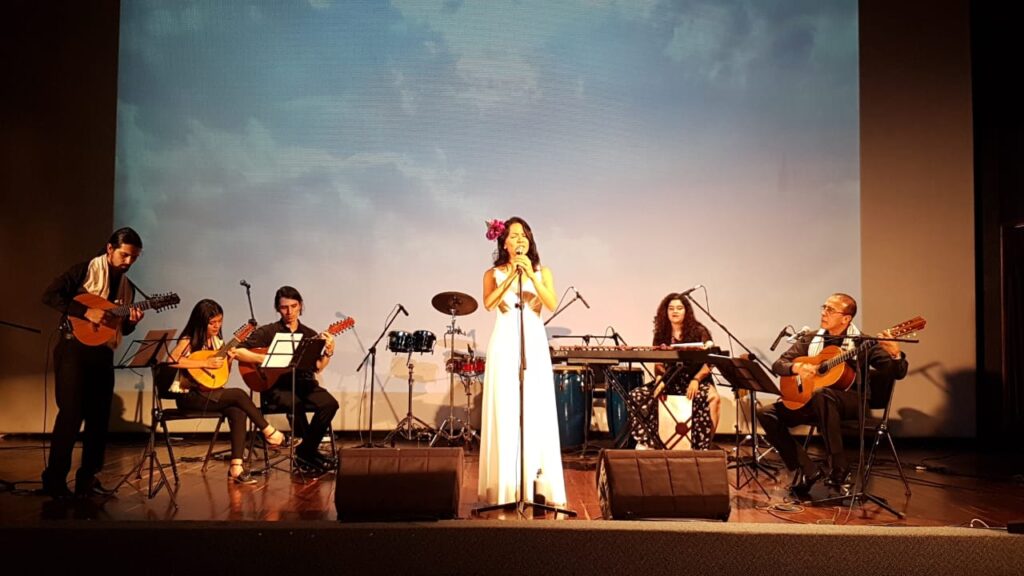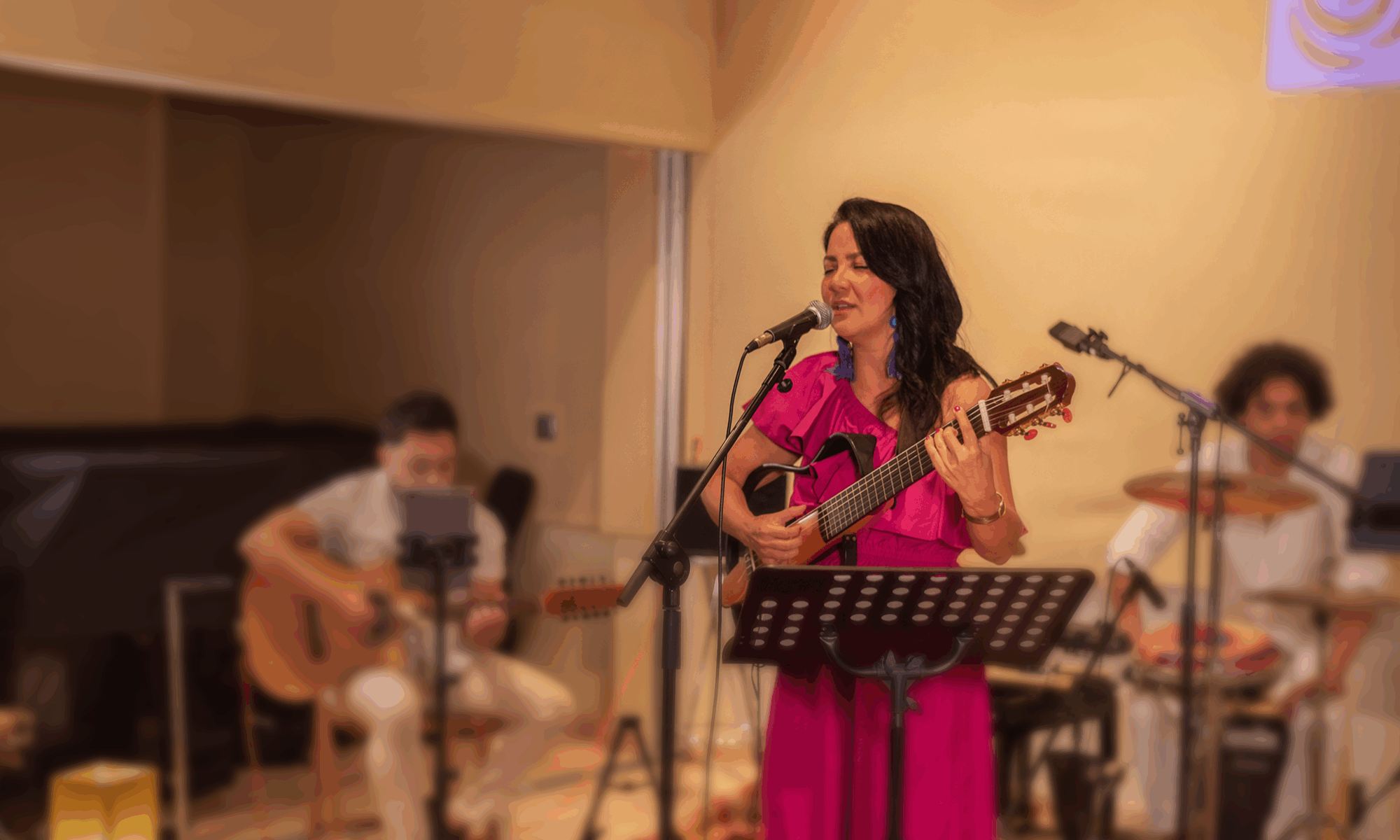NEW MUSIC ALBUM!
The new album Los Colores de mi Ancestro is a tribute to the musical roots and composers of the Colombian Andean region and in particular to one of its most important references: Maestro César Augusto Mejía Anicharico.
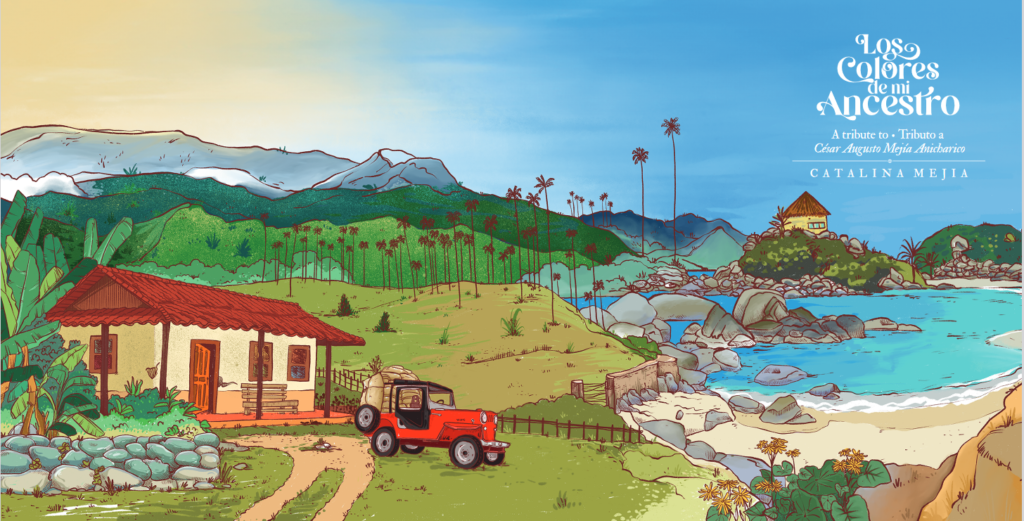
The songs are a fusion of indigenous rhythms from the Colombian Andes region and the Caribbean, as they belong to the origins of maestro Mejía Anicharico. His father comes from Zaragoza (department of Antioquia), his mother from Chiriguaná (department of Cesar). His heritage is a synthesis of the traditions of both regions, as evidenced by the works of Los Colores de mi Ancestro. Maestro Mejía Anicharico has a long and distinguished career in the arts, particularly in Colombian Andean music. His work is regarded as an intangible cultural heritage in Colombia. He has also received numerous composition awards in Colombia and performed on international stages.
The musical compositions included in this collection evoke the distinctive landscapes and cultural heritage of the Andean and Colombian Caribbean regions. They serve as a musical representation, encapsulating the diverse cultural nuances through their lyrics and musical elements. Los Colores de mi Ancestro encompasses ten musical pieces, showcasing a diverse range of styles, from traditional cumbia to fusion with rhythms such as bambuco and guabina. The following section provides a brief contextual analysis of these musical works.
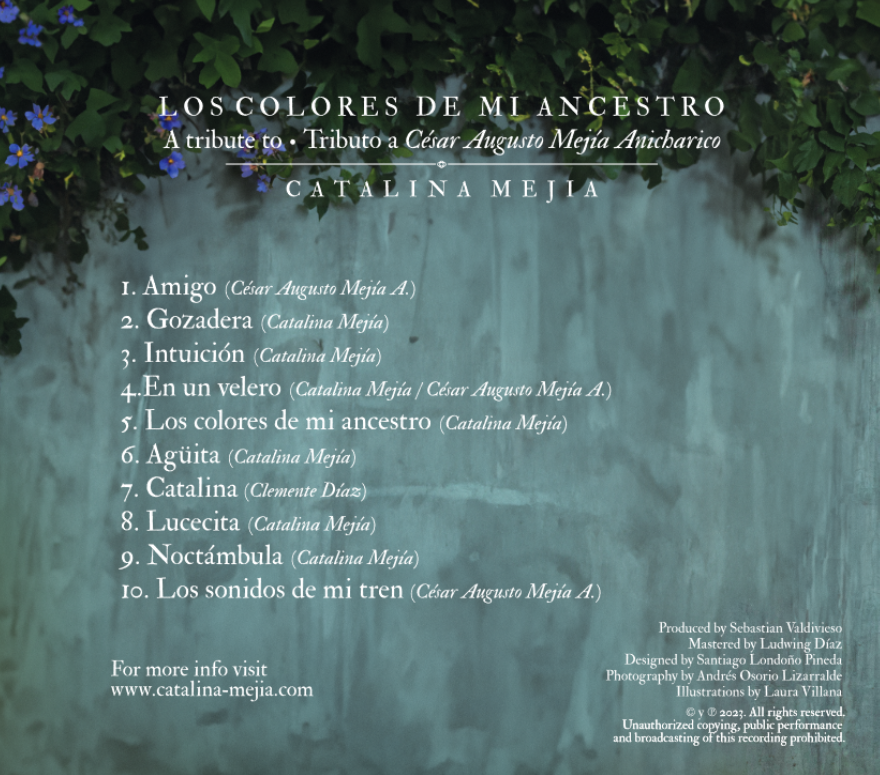
The song AMIGO accurately represents the connection between Catalina and her father, which extends beyond their biological relationship. The lyrics of this song are a call to cultivate relationships throughout life, especially with the people in whom we recognize our humanity and with whom we accompany ourselves in the simple, but especially in the complex stages of the journey. The arrangement of this song was crafted by several esteemed musicians who are regarded as masters of Colombian Andean music. AMIGO serves as the inaugural piece in the album’s musical sequence, symbolizing the enduring bond between father and daughter.
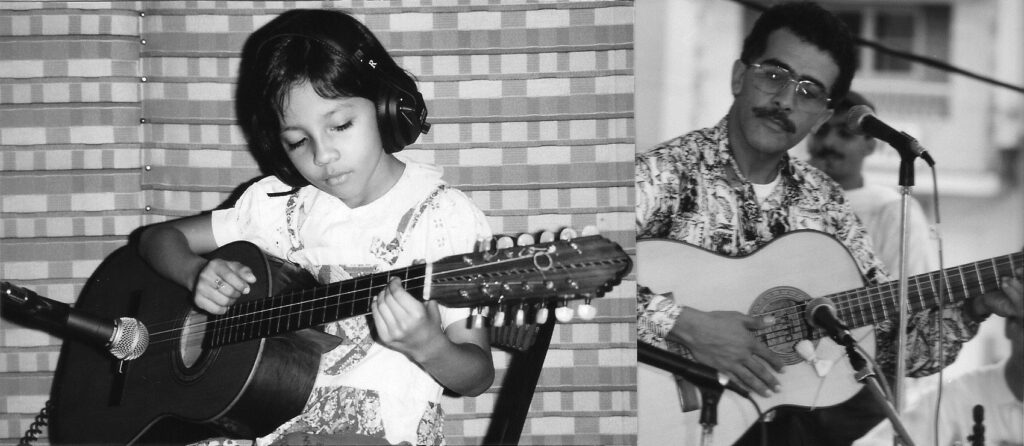
GOZADERA, its lyrics and its music invite us to celebrate life. We are asked to imagine for a moment how we would feel if we were to say goodbye to the material world, and the song ends by telling us that although we are not there yet, we have the opportunity to connect with the joy of life. The music represents just that: a set of saxophones along with other percussion instruments echoing the sounds of a very joyful cumbia.
INTUICIÓN is a song that alludes to the resilience of the human being. Neither hurricane nor storm can break the strength of the human spirit if we listen to our intuition and follow it. A path that Catalina explores through the teachings of her ancestors and invites us to follow with the motivation of this song. The arrangement of the song was written for the typical Colombian trio instrumentation: Guitar, bandola and tiple. It is a harmonic journey with different textures that contrast what a person can experience in a moment of crisis and how they can get out of it by following their intuition.
EN UN VELERO describes how sailing also opens up spaces to reflect on the vicissitudes and difficulties of the journey and how, at the same time, it is possible to leave worries behind and connect with the trip on which we cross the sea. The music is very cheerful and in its simplicity tries to recreate the sea voyage, which is an allegory for the personal and spiritual journey of every human being.

LOS COLORES DE MI ANCESTRO tells the story of how César Augusto’s parents met in a telegraph office in the Colombian Caribbean. The details of both the lyrics and the music show the contrasts of that scenario, of falling in love. The bowed string instruments in the sections where the dance rhythm appears give a subtle touch to the Caribbean feel of this song. The combination of dance and cumbia enhances emotional nuances that are recognized throughout the development of the story of this encounter between two human beings.
AGÜITA is a song in the rhythm of Bambuco. It is dedicated to water in its various forms, with the universal power that it possesses in all its expressions: from the small shoots in the foam of the firewood that releases its moisture when it is lit, to the flow of a small stream. Water carries the secret of healing, and so this song wants to give it a special place by washing our wounds and cleansing our pain. The play of voices in this song is the best way to illustrate all these states, which blend perfectly with different tensions and intentions to create the journey of water as a universal and vital element.
CATALINA is a song written and composed by the maestro Clemente Díaz. It is a living legend of the classical guitar who has left us an exquisite musical legacy for the world repertoire, such as Recuerdos Payaneses and other classics for guitar. Maestro Díaz met Catalina and her father César Augusto at the Mono Núñez Festival in Ginebra. The bond that has developed since then was so strong that Maestro Díaz wanted to give Catalina this song as a gift. The music and the arrangement are very subtle and written for three guitars.
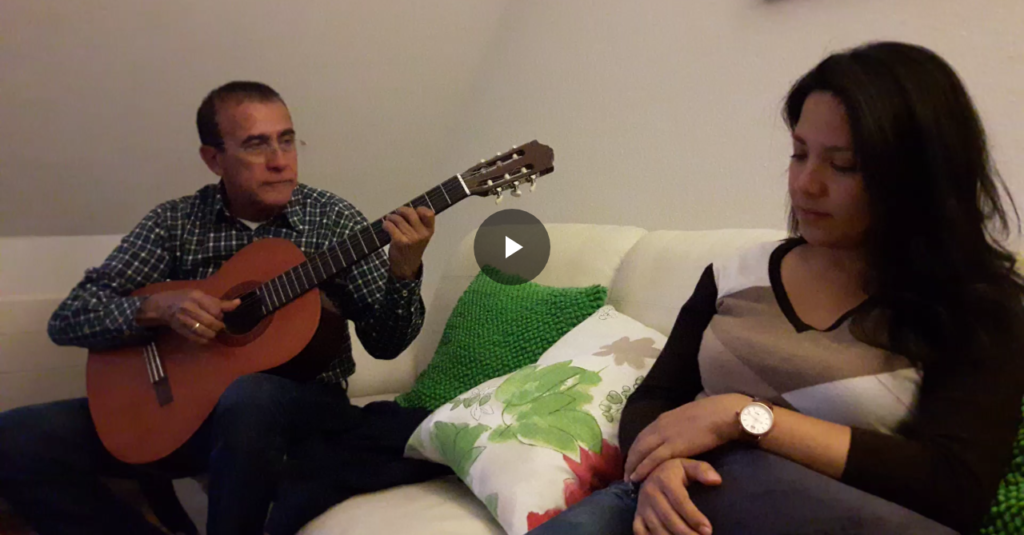
LUCECITA is inspired by the reflections and glimpses of light on the window at sunset, evoking memories of longing and joy in the evenings lived in the Colombian Andes. The different shades of these colours give life to the lyrics of this song, which is supported by a very special rhythm like the guabina. It has allusive metaphors to the elements that recreate a sunset, as well as to the nostalgia that could be felt more intensely in winter, when one originally comes from regions of the planet with tropical climates. The tiple, a native Colombian instrument, plays a central role in the song, contributing its unique sonority.
NOCTÁMBULA is a journey through the thoughts that run through your head on sleepless nights. Doubts, existential questions, setbacks and sleeplessness motivate the song’s narrative to conclude that by questioning everything, we stop honoring the present moment and that we can honor our time by being more present with our intuition and appreciating the simplicity of things. Both Catalina and her father César Augusto tend to be nocturnal. Noctámbula wanders through different corners of doubtful thoughts in her lyrics and explores the sounds of a sleepless night in her music.
LOS SONIDOS DE MI TREN is a song that summarizes a journey through life. It is about the train of reality and the train of illusion and how we are constantly moving between these two “trains”. One of the messages of the lyrics is the “sounds” of our own rhythm that we take with us when we leave this world. Therefore, neither eagerness nor haste should be our daily companions. In music, there are many sonorous and creative elements to reproduce the sounds of a train. This song completes the cycle of ten songs by symbolically carrying the experiences and life stories of Maestro Mejía Anicharico in its various carriages.
